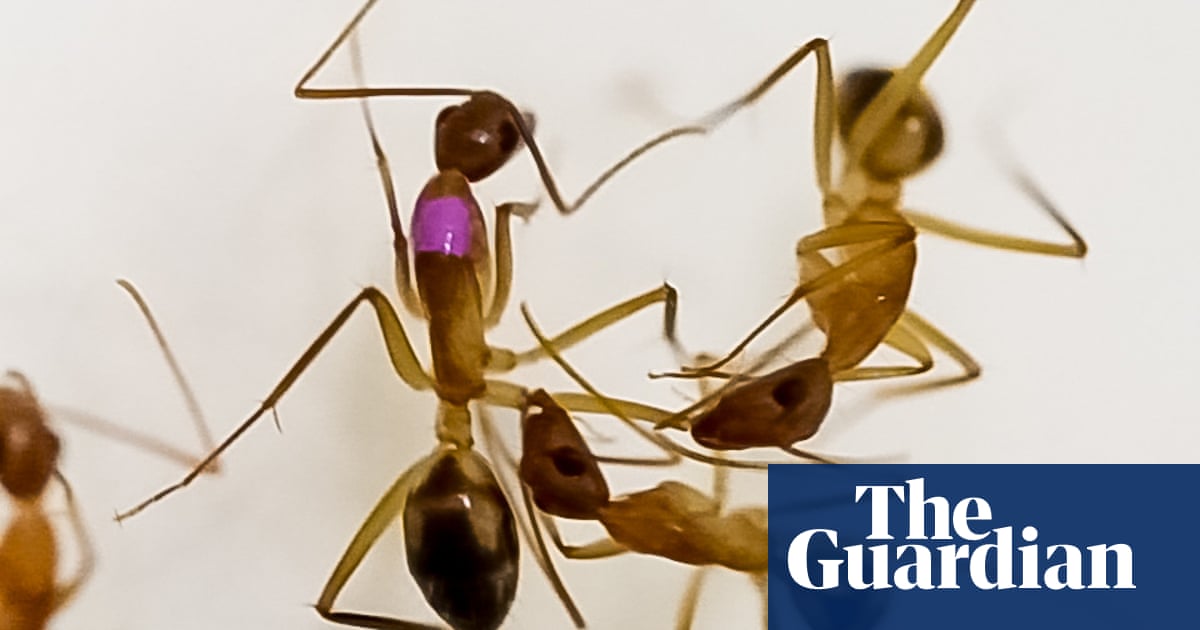Fitness
Ants can carry out life-saving amputations on injured nest mates, study shows

It sounds like a scene from a Spielberg film: an injured worker undergoes an emergency amputation, performed by one of her colleagues, allowing her to live another day. But this is not a human story – it is behaviour seen in ants.
While it is not the first time wound care has been seen in ants, scientists say their discovery is the first example of a non-human animal carrying out life-saving amputations, with the operation performed to treat leg wounds and prevent the onset or spread of infection.
And surprisingly, the insects appear to tailor the treatment they give to the location of injury.. “The ants are able to diagnose, to some extent, the wounds and treat them accordingly to maximise the survival of the injured,” said Dr Erik Frank, from the University of Lausanne and the first author of the research.
Writing in the journal Current Biology, Frank and colleagues report how they cut Florida carpenter ants (Camponotus floridanus) on their right hind limb, then observed the responses of their nest mates for a week.
The results revealed that 13 of 17 ants with injuries on their femur or thigh underwent amputation by their nest mates, with their limb severed at the trochanter – the joint with the hip bone.
“Nest mates would begin licking the wound before moving up the injured limb with their mouthparts until they reached the trochanter. The nest mates then proceeded to repeatedly bite the injured leg until it was cut off,” the team wrote.
By contrast, no amputations were observed for the nine ants with injuries on their tibia, or lower leg. Instead, these ants received only wound care from their nest mates in the form of licking.
The team recorded similar results when the setup was repeated using ants with infected wounds.
Another set of experiments revealed isolated ants with infected wounds were far more likely to die than those with sterile wounds. However, their survival rates greatly improved if the injured ants were either returned to their colonies – suggesting the treatments provided by their nest mates were beneficial – or the infected limb was amputated by researchers, although this only brought benefits for thigh wounds.
Frank said at first it was counterintuitive that amputations were not also beneficial for lower leg wounds. However, further work suggested thigh wounds, but not lower-leg wounds, were associated with damage to structures that pumped a blood-like substance around the ants’ bodies. As a result, infections of the lower leg spread around the body much faster than those of the thigh, meaning amputation of the former did little to improve survival.
Frank said ants were most likely to get injured in territorial disputes with neighbouring colonies but treating the wounded brought benefits.
“We see in these Camponotus species that roughly 10-11% of the ants that go out hunting or looking for food carry an injury from a previous day. So they still make up an important part of the colony,” he said.
Prof Francis Ratnieks, at the University of Sussex, who was not involved in the work, said he was not surprised by the results. “It is another example of an adaptation in the lives of social insect workers in which workers help each other to work for their colony and to help their colony,” he said.
“Such as when a worker honeybee makes a waggle dance to direct a nest mate to food, or when a worker sacrifices its life in defence of the colony, or here where workers amputate the limbs of an injured or infected worker.”


)






